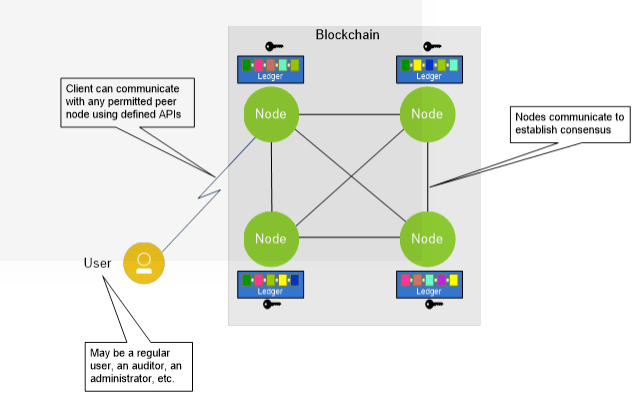Basic Understanding of Blockchain
Mostly Blockchain known as the underlying technology of bitcoin. Basically it uses a peer-to-peer network of computers to validate transactions. Blockchain is a data structure to create and share distributed ledger of transactions among a network of computers. It allows user to make and verify transactions immediately without a central authority.
Currently. The use of blockchain technology is predominant in finance and Banking sector.
The blockchain technology can be categorized into two sections:
Payment Gateway serves a bridge between an eCommerce website and the bank that processes a customer’s credit/debit card payment. The principal function of the payment gateway is to securely transmit the consumer’s confidential credit/debit card and bank account data to the issuing bank and get a response from it concerning whether the transaction is succeeded or failed.
1. Public Blockchain:
A public Blockchain network or permissionless Blockchain network is completely open-ended and anyone willing to participate in this kind of network can participate without any permission. This is the major and only difference between public and private Blockchain network. Anyone can participate in the permissionless network, execute the consensus protocol and maintain the shared open public ledger.
Advantages of Public Blockchain
Disadvantages of Public Blockchain
- Low Privacy.
- Huge computational power and energy is required, less eco-friendly.
2. Private Blockchain
A Private Blockchain Network requires an invitation to participate in the network. The invitation must be validated either by network starter or by the rules/conditions placed by the network starter. Permissioned Blockchain Network puts restriction to the entry of participant and allows only the kind of participant that is required in the network.
Advantages of Public Blockchain
- Increased privacy
- Environment-friendly as less computational power is required to achieve the consensus.(as in the case of Public Network).
Disadvantages of Private Blockchain
- Less secure as compared to public network.

Technical architecture and a high level view of blockchain
In general, a blockchain system consists of a number of nodes, each of which has a local copy of a ledger. In most systems, the nodes belong to different organizations. The nodes communicate with each other in order to gain agreement on the contents of the ledger and do not require a central authority to coordinate and validate transactions.

The process of gaining this agreement is called consensus, and there are a number of different algorithms that have been developed for this purpose. Users send transaction requests to the blockchain in order to perform the operations the chain is designed to provide. Once a transaction is completed, a record of the transaction is added to one or more of the ledgers and can never be altered or removed. This property of the blockchain is called immutability.











